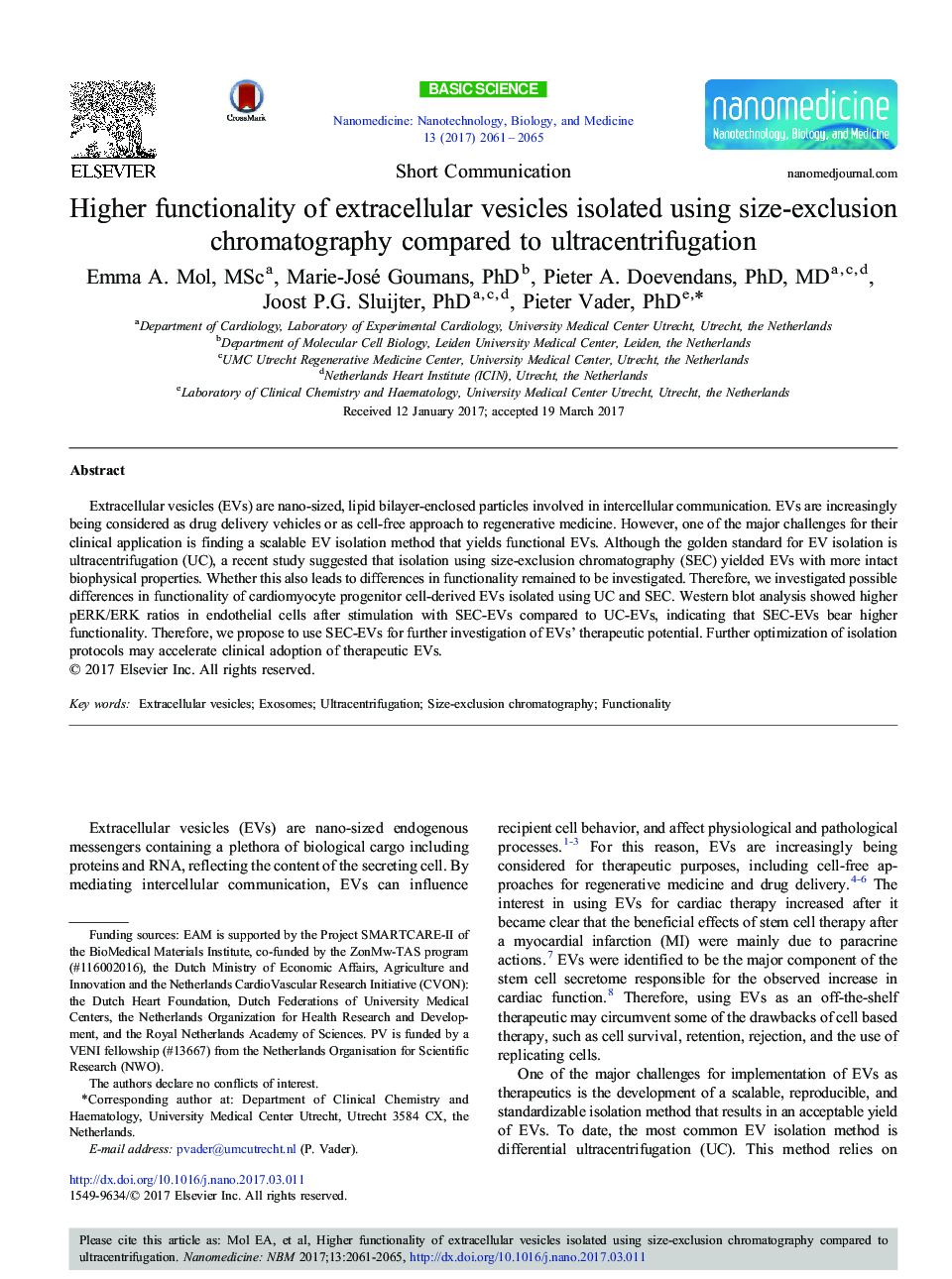| کد مقاله | کد نشریه | سال انتشار | مقاله انگلیسی | نسخه تمام متن |
|---|---|---|---|---|
| 5032876 | 1370001 | 2017 | 5 صفحه PDF | دانلود رایگان |
Extracellular vesicles (EVs) are nano-sized, lipid bilayer-enclosed particles involved in intercellular communication. EVs are increasingly being considered as drug delivery vehicles or as cell-free approach to regenerative medicine. However, one of the major challenges for their clinical application is finding a scalable EV isolation method that yields functional EVs. Although the golden standard for EV isolation is ultracentrifugation (UC), a recent study suggested that isolation using size-exclusion chromatography (SEC) yielded EVs with more intact biophysical properties. Whether this also leads to differences in functionality remained to be investigated. Therefore, we investigated possible differences in functionality of cardiomyocyte progenitor cell-derived EVs isolated using UC and SEC. Western blot analysis showed higher pERK/ERK ratios in endothelial cells after stimulation with SEC-EVs compared to UC-EVs, indicating that SEC-EVs bear higher functionality. Therefore, we propose to use SEC-EVs for further investigation of EVs' therapeutic potential. Further optimization of isolation protocols may accelerate clinical adoption of therapeutic EVs.
Graphical AbstractHigher functionality of SEC-EVs compared to UC-EVs. Extracellular vesicles (EVs) are nano-sized, lipid bilayer-enclosed particles involved in intercellular communication. EVs are increasingly being considered as drug delivery vehicles or as cell-free approach to regenerative medicine. However, one of the major challenges for their clinical application is finding an EV isolation method that yields functional EVs. Here, we investigated possible differences in functionality of cardiomyocyte progenitor cell-derived EVs isolated using UC and SEC. Stimulation with SEC-EVs resulted in a higher pERK/ERK ratio compared to UC-EVs. Therefore, EVs isolated with SEC bear higher functionality compared to EVs isolated using UC.87
Journal: Nanomedicine: Nanotechnology, Biology and Medicine - Volume 13, Issue 6, August 2017, Pages 2061-2065
